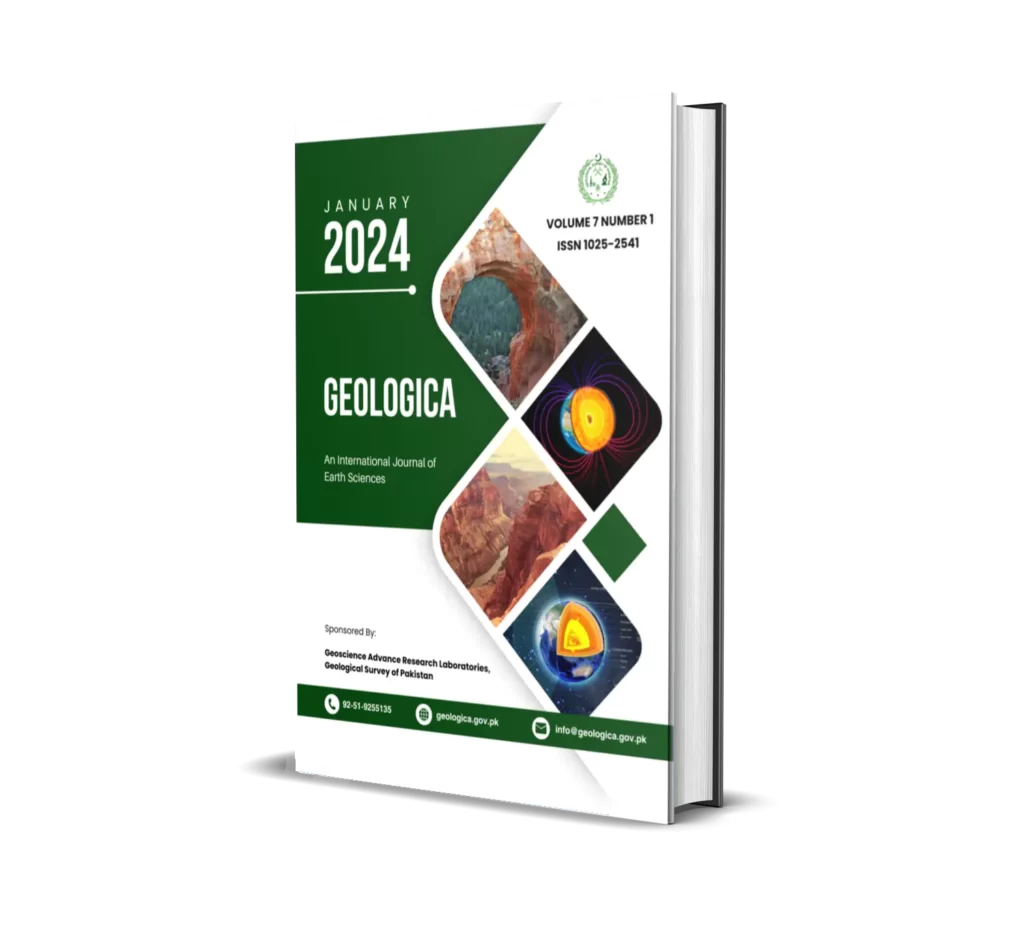ABSTRACT
The current research focuses on detailed geochemical findings in the newly discovered phosphate deposits of Paswal Mian, Banseri, and Shahkot regions, district Abbottabad, located in the Lesser Himalayas on the western side of the Hazara-Kashmir Syntaxis. It encompasses rock formations from the Hazara and Abbottabad formations, particularly the upper and lower dolomite members within the Abbottabad Formation. Phosphate deposits are hosted in the lower dolomite, approximately 30-40 feet from the contact with the lower quartzite member. These phosphate beds extend laterally from Paswal Mian to Shahkot, forming an elongated area and sharing similar traits with other phosphate rocks in the region. Their thickness varies from a few inches to multiple feet. Geochemical results revealed that the phosphate rocks contain P2O5 concentrations ranging between 12-25%, making them suitable for fertilizer industry. P2O5 exhibits a negative correlation with SiO2 and demonstrates negative associations with MgO, Al2O3, Fe2O3, and MnO while displaying positive correlations with CaO, K2O, Na2O, and TiO2. Additionally, the chemical makeup differs among locations; Shahkot shows higher levels of P2O5 and K2O, Banseri displays elevated SiO2, Al2O3, MgO, and LOI, and Paswal Mian presents increased Fe2O3, MnO, CaO, and Na2O. This leads to a classification of phosphate deposits by quality as Shahkot > Paswal > Banseri. Concerning trace elements, Shahkot has higher concentrations of Pb and Cr, Banseri contains more Zn, Ni, and Cd, while Paswal Mian exhibits higher levels of Cu and Co. Health assessments indicate generally low average concentrations of trace elements: Cu at 4.04μg/l, Pb at 43.44μg/l, Zn at 45μg/l, Ni at 3.2-14.5μg/l, Cr at 19.74μg/l, Co at 3.25-10.4μg/l, and Cd at 3.01μg/l, all below hazardous levels. The estimated probable phosphate reserves in the elongated Paswal Mian, Banseri, and Shahkot belt amount to 4.24 million metric tons, with an average composition of 20% P2O5.
KEYWORDS: Geochemistry, Phosphate deposits, Paswal Mian, Banseri, Shahkot, Abbottabad

